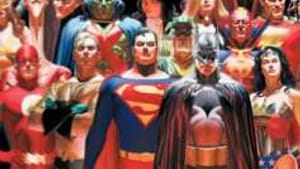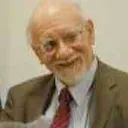Stay in the Loop
BSR publishes on a weekly schedule, with an email newsletter every Wednesday and Thursday morning. There’s no paywall, and subscribing is always free.
The tribalizing of America
Why was 'The Big Sort' overlooked?

The basic thesis of The Big Sort sounds like it's tailor-made for the view-with-alarm pop sociology market. Bill Bishop and Robert Cushing have assembled the evidence that Americans are sorting themselves into like-minded communities in which no one ever encounters anyone who disagrees with them about a public issue. The result of this self-sorting is the dismal landscape we see around us: intense political partisanship, legislative gridlock and a general tendency to demonize the opposition.
The New York Times listed the hardcover edition of The Big Sort as one of the 100 top books of 2008. It was favorably reviewed in the Wall Street Journal, Library Journal and most other standard sources.
Its subject and its critical reception should have made The Big Sort a staple of contemporary political chatter. Yet I haven't met a single person who's heard of it, much less anyone who's actually read it.
Landslide counties
I only learned about the book because it received two brief mentions, three years apart, in The Economist. I forgot to write down the title when I encountered the first mention in 2009 and lost track of it until I saw the second mention last October.
Compare that to books like Malcolm Gladwell's The Tipping Point or Robert Putnam's Bowling Alone. I haven't read either of those opuses, but I know what they're about, and any reference to their basic ideas will evoke knowing nods within most of the groups I frequent.
Bishop and Cushing rest much of their argument on the number of Americans who live in "landslide counties"— counties in which one party won the presidential vote by 20 percent or more. By 2004, more than 48 percent of the U.S. electorate lived in that kind of political environment.
Your kind of neighborhood
But the sorting process goes beyond politics. Americans are sorting themselves out according to entire lifestyles. Liberal Democrats, for example, prefer denser, more urban communities even when they live in the suburbs. Republicans prefer low-density environments.
Bishop begins the book by telling how he and his wife picked a neighborhood when they moved to Austin, Texas. They drove around the metropolitan area until they found a neighborhood that looked right to them— and ended up surrounded by neighbors who shared their liberal democratic views. Their physical surroundings corresponded to a lifestyle associated with a specific political stance.
Marginalized in church
Bishop and Cushing devote an entire chapter to contemporary religious institutions— an area of society that's supposed to promote tolerance and goodwill toward our neighbors. I'm an areligious, happily secular individual, but my late wife was a serious, theologically trained Presbyterian— and their analysis supports my personal observations of recent developments in Protestant churches.
Fifty years ago, a moderately liberal Protestant church would have included a significant minority of Republicans in its congregation. Today, Democrats go to one church on Sunday morning, Republicans to another.
Some of this segregation has been created by huge "megachurches" that have deliberately marketed themselves to specific sections of the community. Some of it is the result of personal decisions, as individuals leave congregations in which they feel marginalized and move to churches in which they feel comfortable.
Moving to extremes
The same process is taking place in most of our other institutions, with predictable results. According to the University of Pennsylvania political scientist Diana Mutz, only 23 percent of Americans report that they regularly discuss politics with people with different views. The percentage actually decreases as the educational level rises.
As the authors report, sociologists have conducted a number of experiments with like-minded groups over the years, and they always get the same results: Like-minded groups tend to move toward the extremes.
The Big Sort has been criticized on the ground that presidential voting patterns present a false picture. Voter registration statistics, the critics say, contradict the authors' basic thesis.
Personally, I'm inclined to favor the presidential statistics. Party registration is a relatively casual matter in the U.S., but presidential elections involve real choices that express deep basic attitudes.
Online sampling
But that's the kind of question that political scientists can debate ad infinitum. I find The Big Sort's overall thesis persuasive primarily because it"'s supported by my personal experience.
Like has always attracted like, but modern technology has made it easier to form tribes. Church shoppers can sample churches scattered through an entire metropolitan area, thanks to the automobile. The Internet and cable TV offer access to a kaleidoscope of information and opinion, but they make it easier to filter out sources that make us uncomfortable.
In 1971, in a novel called The Byworlder, the highly regarded science fiction writer Poul Anderson depicted a future in which the U.S. had become a patchwork of self-conscious subcultures. It was a view of the future that made sense in the '60s counterculture; it makes even more sense when you read Bishop and Cushing's descriptions of the comic book artists who cluster in Portland and the "emerging church" congregations that offer an alternative to the megachurches and the traditional denominations.
But can these tribes live in peace? Poul Anderson's hero was an uncommitted wanderer who traveled from subculture to subculture. Diana Mutz of Penn argues for the social utility of the politically apathetic, who moderate the fury of the activists.
If you share my affections for that blessed cohort, you will probably enjoy reading this book. If you don't, you can ignore it and read something that helps you fight the good fight.
The New York Times listed the hardcover edition of The Big Sort as one of the 100 top books of 2008. It was favorably reviewed in the Wall Street Journal, Library Journal and most other standard sources.
Its subject and its critical reception should have made The Big Sort a staple of contemporary political chatter. Yet I haven't met a single person who's heard of it, much less anyone who's actually read it.
Landslide counties
I only learned about the book because it received two brief mentions, three years apart, in The Economist. I forgot to write down the title when I encountered the first mention in 2009 and lost track of it until I saw the second mention last October.
Compare that to books like Malcolm Gladwell's The Tipping Point or Robert Putnam's Bowling Alone. I haven't read either of those opuses, but I know what they're about, and any reference to their basic ideas will evoke knowing nods within most of the groups I frequent.
Bishop and Cushing rest much of their argument on the number of Americans who live in "landslide counties"— counties in which one party won the presidential vote by 20 percent or more. By 2004, more than 48 percent of the U.S. electorate lived in that kind of political environment.
Your kind of neighborhood
But the sorting process goes beyond politics. Americans are sorting themselves out according to entire lifestyles. Liberal Democrats, for example, prefer denser, more urban communities even when they live in the suburbs. Republicans prefer low-density environments.
Bishop begins the book by telling how he and his wife picked a neighborhood when they moved to Austin, Texas. They drove around the metropolitan area until they found a neighborhood that looked right to them— and ended up surrounded by neighbors who shared their liberal democratic views. Their physical surroundings corresponded to a lifestyle associated with a specific political stance.
Marginalized in church
Bishop and Cushing devote an entire chapter to contemporary religious institutions— an area of society that's supposed to promote tolerance and goodwill toward our neighbors. I'm an areligious, happily secular individual, but my late wife was a serious, theologically trained Presbyterian— and their analysis supports my personal observations of recent developments in Protestant churches.
Fifty years ago, a moderately liberal Protestant church would have included a significant minority of Republicans in its congregation. Today, Democrats go to one church on Sunday morning, Republicans to another.
Some of this segregation has been created by huge "megachurches" that have deliberately marketed themselves to specific sections of the community. Some of it is the result of personal decisions, as individuals leave congregations in which they feel marginalized and move to churches in which they feel comfortable.
Moving to extremes
The same process is taking place in most of our other institutions, with predictable results. According to the University of Pennsylvania political scientist Diana Mutz, only 23 percent of Americans report that they regularly discuss politics with people with different views. The percentage actually decreases as the educational level rises.
As the authors report, sociologists have conducted a number of experiments with like-minded groups over the years, and they always get the same results: Like-minded groups tend to move toward the extremes.
The Big Sort has been criticized on the ground that presidential voting patterns present a false picture. Voter registration statistics, the critics say, contradict the authors' basic thesis.
Personally, I'm inclined to favor the presidential statistics. Party registration is a relatively casual matter in the U.S., but presidential elections involve real choices that express deep basic attitudes.
Online sampling
But that's the kind of question that political scientists can debate ad infinitum. I find The Big Sort's overall thesis persuasive primarily because it"'s supported by my personal experience.
Like has always attracted like, but modern technology has made it easier to form tribes. Church shoppers can sample churches scattered through an entire metropolitan area, thanks to the automobile. The Internet and cable TV offer access to a kaleidoscope of information and opinion, but they make it easier to filter out sources that make us uncomfortable.
In 1971, in a novel called The Byworlder, the highly regarded science fiction writer Poul Anderson depicted a future in which the U.S. had become a patchwork of self-conscious subcultures. It was a view of the future that made sense in the '60s counterculture; it makes even more sense when you read Bishop and Cushing's descriptions of the comic book artists who cluster in Portland and the "emerging church" congregations that offer an alternative to the megachurches and the traditional denominations.
But can these tribes live in peace? Poul Anderson's hero was an uncommitted wanderer who traveled from subculture to subculture. Diana Mutz of Penn argues for the social utility of the politically apathetic, who moderate the fury of the activists.
If you share my affections for that blessed cohort, you will probably enjoy reading this book. If you don't, you can ignore it and read something that helps you fight the good fight.
What, When, Where
The Big Sort: Why the Clustering of Like-Minded America Is Tearing Us Apart. By Bill Bishop with Robert Cushing. Houghton Mifflin Harcourt, 2008. Trade paperback, 384 pages; $12.69. www.thebigsort.com/.
Sign up for our newsletter
All of the week's new articles, all in one place. Sign up for the free weekly BSR newsletters, and don't miss a conversation.

 Tom Purdom
Tom Purdom